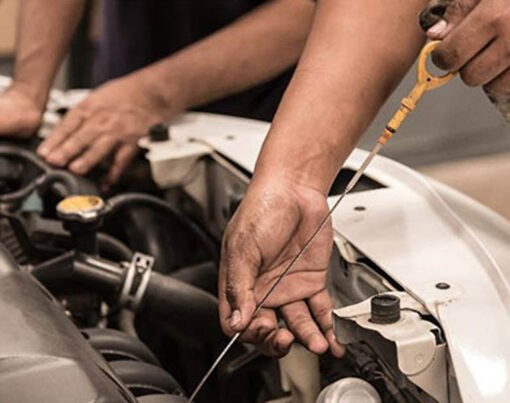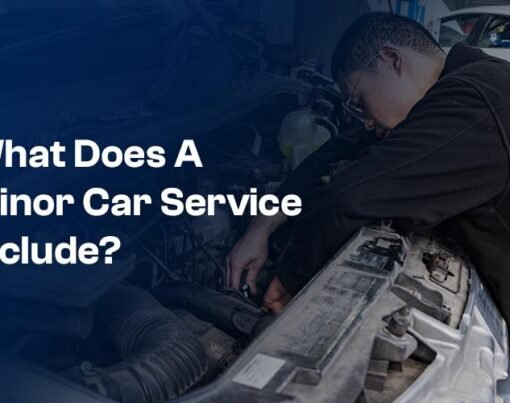When your vehicle breaks down on the side of the road, you may need to call a tow truck for assistance. But, being unprepared for a tow truck can make the process more stressful and time-consuming. So, how do you prepare for a tow truck?
Research and choose a reputable service provider when preparing for a tow truck. Then remove any personal belongings from the vehicle before it’s towed away. Also, document the condition of your vehicle and ensure that it’s accessible for the towing process.
Let’s look at these steps in more detail so you’re ready when the tow truck arrives.
Table of Contents
Steps on How Do You Prepare for a Tow Truck
Whether you need a tow truck for your vehicle or someone else’s, the following steps can help you prepare. Here’s what you should do:
- Step 01: Research and Choose a Reputable Tow Truck Service
- Step 02: Prepare the Vehicle for Towing
- Step 03: Exit All passengers and Remove Personal Belongings
- Step 04: Document the Vehicle’s Condition
- Step 05: Ensure Accessibility
- Step 06: Communicate Any Specific Needs
- Step 07: Follow Safety Guidelines
- Step 08: Clear Pricing and Payment
Step 01: Research and Choose a Reputable Tow Truck Service
To ensure a smooth towing experience, find a trustworthy tow truck company that fits your vehicle’s needs and specifications. Research the available companies in your area and look for reviews or recommendations from friends and family.
Check if they offer the towing service you require, such as a flatbed or rollback truck. Choosing a reputable company with a good track record is essential to avoid any potential damage to your vehicle during transport.
Provide your location details, including the address and any specific instructions you have that will help them find you quickly. And if you have any questions or concerns, don’t hesitate to ask before the towing process begins.
Step 02: Prepare the Vehicle for Towing
Before being loaded onto the tow truck, turning off the engine is crucial. Based on your transmission type, put the vehicle in park or neutral gear, and engage either the parking or emergency brake. To prevent movement during transportation, press your tires against the curb.
Step 03: Exit All passengers and Remove Personal Belongings
Before your vehicle is towed, all passengers must exit the car, windows closed, doors locked, and the trunk secured. Ensure that you collect all of your personal items and valuables, including anything kept in the trunk or glove compartment.
Remember that once your car is impounded, you may only have access to your possessions after its release. Unattended personal belongings may be prone to damage or theft, so it’s crucial to remove every item now to avoid any future regrets.
Also, remember to take your spare change in the cup holder, sunglasses on the dashboard, and your favorite air freshener on the rearview mirror. Every little thing needs to be taken care of.
Step 04: Document the Vehicle’s Condition
Record the vehicle’s condition before it’s towed by taking photos of both the interior and exterior. Pay special attention to any scratches or damage that already exists.
Documentation of the vehicle’s condition will give you peace of mind and protect you in case of any damage during transport. Make sure to review the photos to ensure they accurately reflect your car’s state.
Step 05: Ensure Accessibility
To ensure a smooth towing process, it is important to make sure that the tow truck driver can easily access your vehicle. This can involve leaving the keys in a designated spot or providing instructions for interior access as specified by the towing company.
If you are absent during the tow, let the towing company know how they can gain access to your vehicle. This means leaving the keys in a secure location or providing specific instructions on how to enter your car.
Pre-arranging accessibility will save time and prevent unnecessary delays or complications during the towing process.
Step 06: Communicate Any Specific Needs
Ensure to inform the towing company of any special requirements your vehicle has, such as low ground clearance or non-functioning steering wheel. This helps them prepare the necessary equipment and select the appropriate tow truck to ensure smooth and secure towing.
Failing to communicate these specific needs beforehand can damage your car during towing. Therefore, let the towing company know about any unique features or requirements of your car before they arrive for a safe and efficient towing job.
Remember, by being upfront with the details, you can avoid potential complications and ensure your vehicle is in good hands.
Step 07: Clear Pricing and Payment
When hiring a towing service, be sure to find out what the cost will be and when payment is due. Or you might end up with an unexpected bill that will leave you feeling frustrated and ripped off.
Communicate with the towing company about their pricing structure and any additional fees that may apply, such as mileage or after-hours charges. The payment method must be clarified before the service begins to avoid misunderstandings.
Ensure any hidden costs are revealed before payment is due and find out if the company provides any discounts or promotions. Everything should be clear prior to the tow truck arriving, leaving you feeling confident in your choice of service.
If you’re not comfortable proceeding with the tow, you can always choose a different provider.
Maximize Your Towing Experience: Essential Tips to Ensure a Stress-Free Process
Proper preparation before the arrival of a tow truck is crucial to ensure a smooth and stress-free towing process. Remember to bring along all necessary documents and personal belongings from your vehicle and secure any loose items before the tow truck arrives.
It is important to park in a safe location where the tow truck can easily access your vehicle. Communicate clearly with the tow truck driver regarding any special requests or instructions you may have.
By following these simple yet essential steps, you can have peace of mind knowing that your vehicle is being safely transported. During the towing process, make sure you’re well prepared for any unexpected situations.










